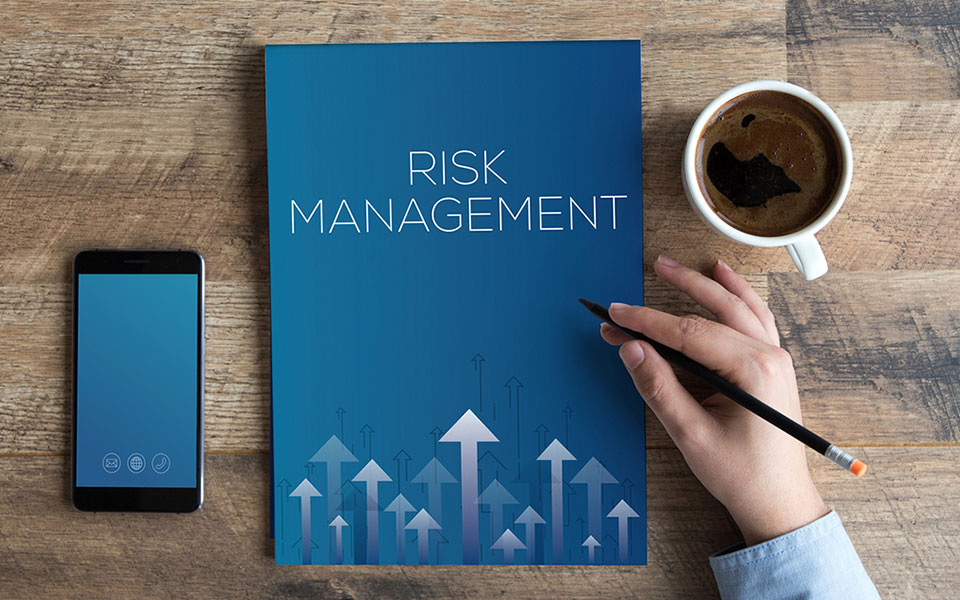Risk is unavoidable. Every aspect of your business impacts the cost of risk. Calculating the true cost of your risk may be difficult because it includes both pure and speculative risk. To evaluate your exposures, we recommend conducting a qualitative and quantitative analysis.
A qualified risk management expert will use a cumulative cost of risk approach and tailor your risk management program to achieve the ultimate goal – controlling your price.
Steps to Manage the Cost of Risk for Your Business
1. Analyze Exposures
A risk management interview process will match your risk management approach to your overall business objectives. Your business’ qualitative aspects provide important details needed to solidify your premium.
Your company’s history will help determine your risk aversion. Traditionally, start-up organizations are risk adverse for financial sustainability. An established organization’s stagnancy or conservative business plans are risks to contemplate. Industry, market position and competition are also important to risk management positioning.
A quantitative analysis supports the qualitative interview. Reviews will include hard numbers and prior losses to identify performance trends. Other factors to examine include:
- Average incurred costs per loss
- Total sustained trends
- Top loss drivers
- Locations with high-frequency issues
- Fraud behaviors
- Reporting lag time
- Frequency versus severity ratios
- OSHA-recordable performance
An in-depth analysis will reveal critical areas driving your total cost of risk. Mitigating the exposures includes isolating these problematic root causes and employing control measures.
2. Implement Control Measures
Identifying exposures is the best control measure. An estimated 75% of commercial insurance expenses are claims-driven. A comprehensive loss control evaluation estimates your strengths and weaknesses. Examples of other cost-containment strategies include:
- Proactive Return-to-Work Program Communicate with physician about potential modified employee job duties. Establish a relationship with a local occupational medicine clinic. Invite the physicians into your business to get a first-hand look and understanding of your operations.
- Fraudulent Claim Behavior Fraud will drive the cost of risk out of control. Educating employees and safety incentives are effective anti-fraud tactics.
- Motor Vehicle Accident Kits Maintain accident kits, including a disposable camera, in all company vehicles. This provides documented evidence and stronger subrogation results.
3. Determine Risk Transfer & Financing
Once exposures are identified and control measures are implemented, you can examine remaining exposures to transfer and/or finance. The most basic topics include:
- What amount of risk can your business afford internally?
- Can risk be transferred to a third party?
- What portion of exposures does your organization want to finance through an insurance policy?
These will provide a direction to financing your risk. You should also evaluate current cash flow and if account receivables are up to date. Consider a combination of insurance and non-insurance strategies.
4. Manage Exposures
Nearly 25% of businesses that sustain a major catastrophe are no longer in business within a year. If there is an interruption in your operations, are you prepared? The best plan of action is to develop a comprehensive business continuity plan to back up your policies and procedures.
We’re Here to Help Prevent Risk
What is your risk exposure? If you are interested in reviewing your risk management plan, contact one of our team members today.
© Copyright CBIZ, Inc. All rights reserved. Use of the material contained herein without the express written consent of the firms is prohibited by law. This publication is distributed with the understanding that CBIZ is not rendering legal, accounting or other professional advice. The reader is advised to contact a tax professional prior to taking any action based upon this information. CBIZ assumes no liability whatsoever in connection with the use of this information and assumes no obligation to inform the reader of any changes in tax laws or other factors that could affect the information contained herein. Material contained in this publication is informational and promotional in nature and not intended to be specific financial, tax or consulting advice. Readers are advised to seek professional consultation regarding circumstances affecting their organization.
“CBIZ” is the brand name under which CBIZ CPAs P.C. and CBIZ, Inc. and its subsidiaries, including CBIZ Advisors, LLC, provide professional services. CBIZ CPAs P.C. and CBIZ, Inc. (and its subsidiaries) practice as an alternative practice structure in accordance with the AICPA Code of Professional Conduct and applicable law, regulations, and professional standards. CBIZ CPAs P.C. is a licensed independent CPA firm that provides attest services to its clients. CBIZ, Inc. and its subsidiary entities provide tax, advisory, and consulting services to their clients. CBIZ, Inc. and its subsidiary entities are not licensed CPA firms and, therefore, cannot provide attest services.















